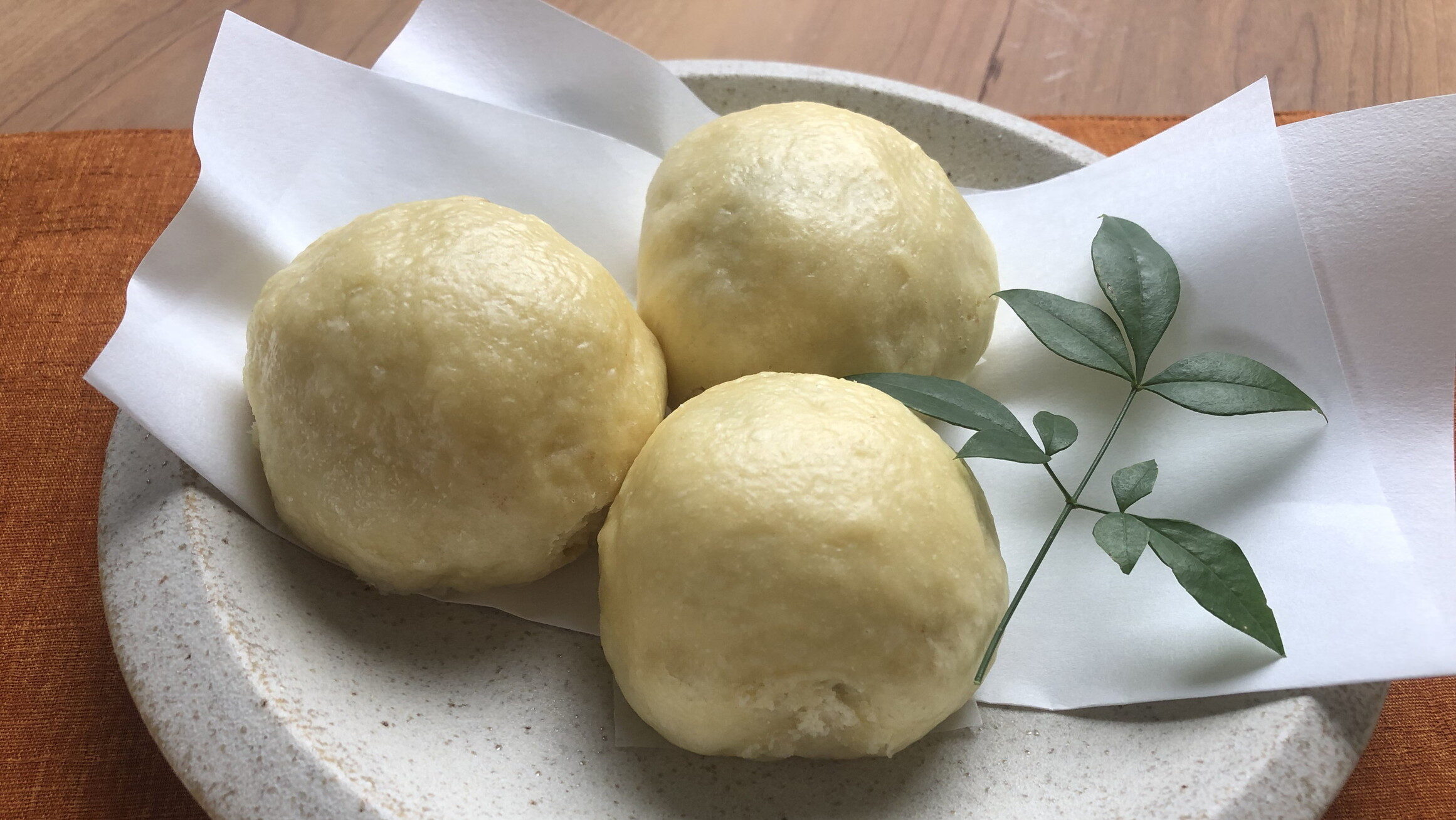
Howdy doody! Up here in Gunma, where the mountains stand tall and the wheat grows strong under that long winter sun, we’ve got a sweet little treat that’s been a local favorite for ages: the “Tansan Manju”! It’s a simple steamed bun with a bit of a secret ingredient that gives it a special touch. Let me tell you all about it!
Dish Name: Tansan Manju / 炭酸まんじゅう
- Region / Location: Gunma Prefecture (throughout the prefecture).
- Primary Area of Tradition: Throughout Gunma Prefecture.
- Main Ingredients: Wheat flour.
How It’s Eaten / Served
Tansan Manju are made by creating a dough from wheat flour, baking soda (that’s the “tansan” or carbonation!), baking powder, and sugar. This dough is then wrapped around a sweet filling (usually anko, red bean paste), shaped into little buns, and steamed until fluffy and cooked through. While they’re enjoyed all over Gunma, they’re particularly popular in places like Tatebayashi City and Takayama Village. You’ll even find unique variations in other towns, like soba manju (buckwheat buns) in Kanra Town and nira manju (chive buns) in Meiwa Town. While the filling is typically sweet bean paste, you might occasionally stumble upon savory versions filled with things like pickled mustard greens (takana) or okara (soy pulp)!
Cultural Background and Preservation
Gunma’s got these amazing mountains, the “Gunma Hyakumeizan” – a hundred famous peaks! The soil around here is often volcanic ash, which drains well and is great for growing things. Plus, we get a lot of sunshine in the winter, which makes it perfect for growing wheat. So, it’s no surprise we have tons of local dishes that use wheat, and Tansan Manju is one of them. The secret to its slightly unique flavor is the baking soda in the dough, which gives it a hint of bitterness that complements the sweetness. Back in the day, when sugary treats were a real rarity, these sweet and tasty Tansan Manju were a special kind of indulgence, a real treat! You might also hear them called “Fukashi Manju” (steamed buns) or “Inaka Manju” (country buns).
Because they used precious sugar, Tansan Manju were often brought out as a special treat for seasonal events like the harvest moon festival (Jugoya) or as a reward after a long stretch of farm work. They were a real treasure! Sometimes, they were even offered to ancestors. And for those long days working in the fields, they made a great little snack called “Kojuhan” to keep folks going.
While you can still find folks making Tansan Manju at home, you’ll also see them being sold as homemade treats by farmers at local direct-sale markets. In Maebashi City, they even hold workshops teaching people how to make Tansan Manju using locally grown wheat flour, all to help keep this tasty tradition alive!
Additional information:
- Anko (あんこ): Sweet red bean paste, a common filling in many Japanese sweets.
- Jugoya (十五夜): The harvest moon festival, traditionally celebrated on the 15th night of the eighth lunar month. It’s a time to appreciate the autumn harvest.
- Kojuhan (小昼飯): A mid-morning or mid-afternoon snack eaten by farmers during work.
- Soba manju (そばまんじゅう): Buns made with buckwheat flour.
- Nira manju (ニラまんじゅう): Buns filled with chives.
- Takana (高菜): Pickled mustard greens, often used as a savory filling.
- Okara (おから): Soy pulp, a byproduct of tofu production, sometimes used as a filling.
The information about regional cuisine featured on this website (Piggy's Grandma of Japan) is summarized and adapted from the Ministry of Agriculture, Forestry and Fisheries of Japan (MAFF) website, "Our Regional Cuisines"Additional commentary is provided based on the unique experiences and perspectives of the site's editors.
The copyright for the original content regarding regional cuisine belongs to the Ministry of Agriculture, Forestry and Fisheries of Japan.
The summaries and adaptations published on this site are intended for informational purposes only. Piggy's Grandma of Japan does not guarantee the accuracy or completeness of this information. For the most accurate and complete details, please refer to the original pages on the MAFF website.


